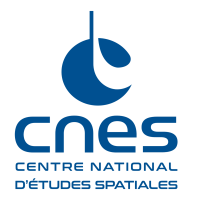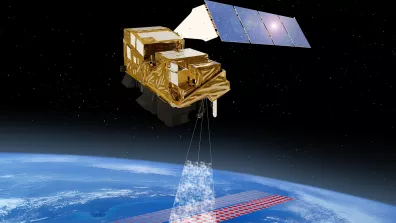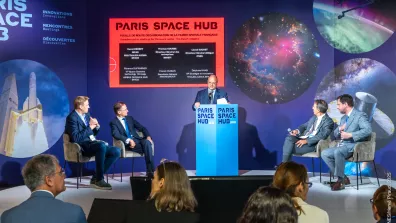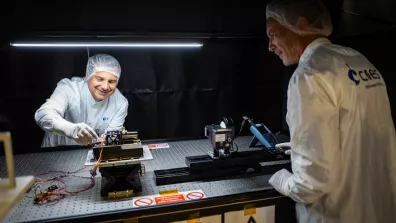On 25 July, the MicroCarb microsatellite was lofted into a 650-kilometre orbit on a mission to measure global atmospheric fluxes of CO2, the main human-induced greenhouse gas. Developed by CNES with funding from the French government’s PIA future investment programme, this science mission is a first for Europe. With the average global temperature already 1.3°C higher than in the late 19th century (1850-1900), quantifying CO2 fluxes is fundamental to better understand the origins and impacts of climate change. Satellite data will enable us to identify the planet’s main carbon sinks, and urban and vegetation emissions through the seasons.
An ultra-light satellite carrying an innovative sensor
“MicroCarb is a demonstrator, not an operational mission,” cautions Philippe Landiech, CNES project leader for the MicroCarb mission and the Myriade series. “It will enable industry contractors and scientists to calibrate measurements for future missions like CO2M.” This latter mission—planned to launch in 2028—will be the first operational European satellite ever to measure CO2 at high resolution.
MicroCarb isn’t the first satellite to measure CO2 from space, succeeding in particular the U.S. OCO-2 mission soon set to be retired. Its unique feature is that “measurements will be similar to OCO-2, but the satellite is lighter and more compact, and therefore cheaper,” explains Bruno Cugny, technical policy expert for orbital systems at CNES. Whereas OCO-2 weighed about 500 kilograms, MicroCarb is a relative featherweight at just 180 kilograms. Reducing satellite mass directly reduces launch costs, a key decision factor for governments funding this type of mission.
How did CNES’s engineers pull this feat off? “The biggest challenge was to miniaturize the instrument on the satellite while maintaining measurement precision,” explains Philippe Landiech. “It weighs just 80 kilograms, three times lighter than the U.S. instrument.”

The instrument is a passive infrared spectrometer that splits light reflected from Earth’s surface, like raindrops that form a rainbow when the Sun shines. MicroCarb will split this light into four spectral bands to isolate CO2 and oxygen absorption lines. CO2 concentration will be measured to within one part per million (ppm), i.e., the number of CO2 molecules in a million molecules of air. This level of precision is vital to study natural and human-induced fluxes, with the latter increasing by several ppm per year.

“The originality of our approach was to observe the four spectral bands through a single instrument, where previous instruments employed a separate sensor for each band,” explains Bruno Cugny. “Packing four instruments into one was the key to miniaturizing the satellite.”
The instrument also features innovative mirrors and a passive cooling system for the sensor. Developed by CNES in partnership with Airbus Defence & Space, it has been the subject of presentations at scientific conferences and two patents have been filed.
Calibration vital for robust data
While the science goal is to measure CO2 with the same level of performance as previous missions, engineering teams faced another challenge, as Élodie Cansot, the mission’s instrument manager at CNES, explains: “The miniaturization of the instrument and the low amount of power available from the satellite—200 W maximum and about 50 W for the instrument—meant its design and calibration method had to be optimized.”
The satellite’s readings will be scrupulously validated on the ground. “It’s vital to check the quality of the satellite’s data against ‘ground truth’,” says Bruno Cugny. “Forgoing this validation phase is often a weakness of start-ups working in this domain.” Once the satellite is in orbit, the first phase of the mission involves comparing its data with those acquired by ground spectrometers, balloon-borne instruments and airborne lidar.
Data will be relayed to Eumetsat in Germany on each satellite pass. There are 3,000 computers dedicated to the mission. “From the raw satellite data, ground teams calculate the CO2 concentration for each pixel using computation sequences developed by CNES,” explains Bruno Cugny. CNES is tasked with maintaining the processing algorithms and data quality.

CNES supporting risk-taking to boost innovation
The MicroCarb mission is thus innovating on many counts, and CNES’s support has been a key factor on that score, as Bruno Cugny explains: “When you’re dealing with a novel concept, manufacturers could get cold feet. So, one of CNES’s jobs is to take on some of that risk.”
France’s space agency initiated the mission in 2016 in response to meet a need of the scientific community, and is also system and satellite prime contractor, responsible for performance, exploitation and operations. “From the early stages of the instrument’s development at Airbus Defence & Space, CNES set up testbeds in its laboratories to characterize certain equipment like the sensor, echelle grating and polarization scrambler,” adds Bruno Cugny. “The goal was to measure their performance and ensure they match mission requirements.”
Once the calibration and validation phases are completed, CO2 measurements processed from MicroCarb’s data will be accessible to all via the AERIS online platform by mid-2026. CO2 concentration will be calculated for pixels covering 4.5 x 9 km. The satellite will revisit every point on the globe every 25 days, enabling seasonal comparisons of CO2 fluxes.
The bus on which MicroCarb’s instrument is mounted was also built by CNES. It is the 19th in the Myriade microsatellite series to go into space. Tipping the scales at just 100 kilograms, it offers the opportunity to accomplish space missions cheaper and faster—precisely what was required for MicroCarb.
